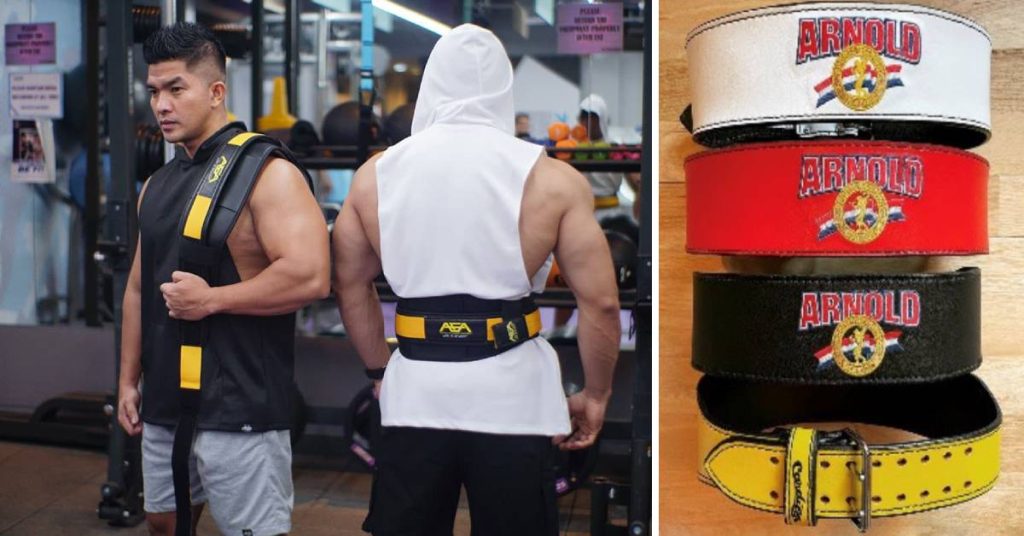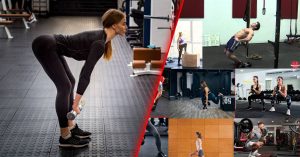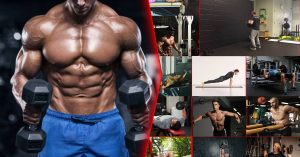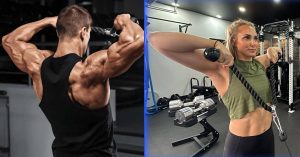Have you ever felt the unsettling sensation of your spine wavering under a heavy load? Forget those generic, uncomfortable belts that barely offer support. Envision a belt that feels like a custom hug for your core. It’s time to step up your game and empower your lifting experience with a custom weightlifting belt, a personalized powerhouse for your fitness journey.
Table of contents
MORE keyboard_double_arrow_down LESS keyboard_double_arrow_up
Decoding the Custom Weightlifting Belt: More Than Just a Strap
A weightlifting belt is often perceived as a simple waist strap used during heavy weightlifting sessions. Typically envisioned as a wide, adjustable leather strap, it wraps around the waist, creating an image often associated with strength training – broad shoulders and a narrow waist. But there’s much more to a weightlifting belt than just its appearance.
The Functional Role of a Weightlifting Belt
Supporting the Lower Back
The primary function of a lifting belt is to provide additional support for the lower back, especially during heavy lifts such as squats and deadlifts. These exercises place significant strain on the lower back and core muscles, and the belt acts as a stabilizing force, reducing the risk of injury and enabling the lifter to handle heavier weights more safely.
When to Use a Weightlifting Belt
Weightlifting belts are particularly recommended for lifts where the individual is handling weights close to their maximum capacity, generally around 80 percent or more of their one-rep max. In such scenarios, the belt provides crucial support.
However, it’s important to note that for exercises like the bench press, where the lower back isn’t heavily engaged, a belt may not offer any substantial benefit.
Components of a Custom Weightlifting Belt
- Strap: the main body of the belt, usually made of leather or synthetic materials, provides the core support.
- Buckle: the buckle secures the belt in place, allowing for adjustments in tightness and ensuring a snug, supportive fit.
- Prongs: these are the metal pins on the buckle that fasten the belt at the desired tightness.
- Belt Loops: these loops help to keep any excess strap secured and out of the way during lifts.
Variations and Names
Weightlifting belts come in various forms and are known by several names, each catering to specific needs and preferences. These include powerlifting belts, customized weight lifting belts, Bodybuilding belts etc.
Each variant, while serving the same fundamental purpose, may differ in terms of width, thickness, material, and closure mechanism, allowing lifters to choose one that best suits their lifting style and requirements.
In essence, a custom weightlifting belt is a crucial tool in a lifter’s arsenal, offering not just support and safety, but also the confidence to push boundaries and achieve new personal bests in strength training.
The Indispensable Role of Custom Weight Lifting Belts According to Experts and Research
A custom weightlifting belt is much more than a piece of gym equipment; it’s a critical tool that offers tangible benefits to lifters across all levels. Powerlifting coach and Elitefts founder Dave Tate perfectly summarizes its significance:
“A custom weightlifting belt can be a valuable tool for lifters of all levels. It can provide extra support and stability for the spine, which can help to prevent injuries and improve performance.”
According to an article published in the National Library of Medicine, the strategic use of weightlifting belts significantly enhances performance in various lifting tasks. This is particularly evident in heavy compound exercises like squats and deadlifts.
The secret lies in the combined effects of increased intra-abdominal pressure (IAP), bolstered core stability, and a psychological boost, instilling greater confidence in the lifter.
Furthermore, a pivotal study from the Journal of Strength and Conditioning Research reveals that weightlifting belts can amplify intra-abdominal pressure by up to 40%. This surge in pressure is instrumental in stabilizing the spine, which translates into improved performance and reduced risk of injury.
Fitness Educator and Coach Isaac Rich, in a post on Instagram, underscores the importance of bracing during weight lifting. He notes that bracing is crucial, especially in exercises like squats, deadlifts, RDLs, and lunges, where the load is primarily on the upper body.
It’s essential for transferring the load to the muscles and maintaining core pressure, rather than straining the spine. Belts serve as a physical brace, offering something solid to brace against, similar to how bracing against a wall would work.
My Personal Insights on the Importance of Customization
As a seasoned fitness expert, I’ve observed the transformative impact of using a weightlifting belt. It was a game-changer in my lifting routine, significantly improving my posture and instilling confidence. This experience is mirrored in the individuals I train.
However, finding the right fit is crucial – a realization that led me to explore the world of custom gym belts. The journey taught me the importance of precise customization to suit individual needs, an insight I’m eager to share with you.
In the following sections, I’ll delve into the nuances of selecting the perfect custom weightlifting belt, guiding you through the myriad factors to consider for a belt that not only fits your body but also your lifting style and goals.
Navigating the Diversity of Custom Weightlifting Belts
Weightlifting belts are not a one-size-fits-all accessory; their variety caters to different lifting styles and preferences. Understanding the types of belts available is crucial in selecting the right one for your training needs.
1. Bodybuilding Belt: Versatility for the Dynamic Lifter
The bodybuilding belt represents a middle ground between the rigidity of powerlifting belts and the flexibility of velcro belts, often referred to as an Olympic weightlifting belt.
Predominantly crafted from leather, these belts provide more abdominal pressure than velcro belts, aiding in heavy lifts while still allowing a range of motion.
The design typically includes a thicker back section tapering towards the front, equipped with a double-prong buckle for secure fitting and consistent pressure distribution.
2. Powerlifting Belt: The Foundation of Maximum Support
Powerlifting belts are distinct in their uniform width and robust construction, making them the firmest among all weightlifting belts.
Their consistent width around the abdomen ensures maximal surface contact, offering unparalleled support and pressure for heavy, compound movements.
This type of belt is often the go-to choice for competitive powerlifters who require unwavering stability during high-intensity lifts.
3. Velcro Belt: Flexible and Convenient for Recreational Lifters
Velcro belts are known for their ease of use and adjustability, making them a popular choice for recreational lifters and those who engage in a variety of exercises.
belts typically exert less abdominal pressure compared to their leather counterparts, offering a balance of support and flexibility.
The velcro closure allows for quick adjustments between sets, making them a practical option for workouts involving a mix of lifting and functional movements.
4. Dipping Belt: Specialized for Enhanced Resistance Training
The dipping belt stands out with its unique design, incorporating a chain or strap connected to the front of the belt with heavy-duty carabiners. This feature allows for the addition of weight plates, enhancing exercises like dips, chin-ups, and pull-ups by adding resistance.
Constructed from either leather or durable synthetic materials like neoprene, dipping belts are designed to be wide throughout, ensuring even weight distribution and core support for effective and safe enhanced bodyweight training.
Each type of weightlifting belt serves a specific purpose in the weightlifter’s arsenal, catering to different needs, from heavy powerlifting to dynamic bodybuilding and functional training. Understanding these distinctions is key to choosing a belt that aligns with your training goals and style.
Lifting Safely and Effectively with a Belt
Dr. Stuart McGill, a leading authority in spine biomechanics, asserts the importance of proper fit: “A properly fitted custom belt can significantly increase intra-abdominal pressure, stiffening the spine and safeguarding the discs.”
Your choice of material – whether the enduring comfort of leather or the lightweight flexibility of nylon – and the style of belt, be it a lever or traditional buckle, plays a pivotal role in the overall experience and effectiveness of the belt.
Gradually incorporating your belt into your training, particularly for compound lifts like squats and deadlifts, is key. Focus on mastering form without relying solely on the belt, and always be mindful of your body’s feedback. Avoid over tightening, as a snug, comfortable fit is most effective.
Additional Advice
- Warm-Up Routine: Begin every lifting session with a thorough warm-up of your core and spine. This is vital, whether you’re lifting with a belt or not.
- Selective Usage: Belts are most effective for heavy compound lifts. For lighter exercises or those requiring greater flexibility, consider lifting without the belt.
- Expert Guidance: If you’re uncertain about using a belt or have specific concerns, don’t hesitate to seek advice from a qualified trainer or coach, who can offer tailored recommendations.
Dispelling Myths: Understanding the True Role of Custom Weightlifting Belts
In the world of strength training, misconceptions about weightlifting belts are rampant. Let’s debunk some common myths and set the record straight with facts, clarifying the real benefits and purpose of custom weightlifting belts.
Myth 1: Belts Are Exclusively for Powerlifters
Reality: The versatility of weightlifting belts extends far beyond the realm of powerlifting. These belts are beneficial for a wide spectrum of athletes, from Olympic lifters to fitness enthusiasts who hit the gym on weekends.
The core support and stability that a well-designed belt provides are invaluable across various lifting disciplines. It acts like a supportive companion for your spine, encouraging you with each lift and helping you push beyond your perceived limits.
Myth 2: Using Belts Leads to Core Weakness
Reality: Contrary to this popular belief, strategic use of weightlifting belts can actually contribute to core strengthening. By simulating the body’s natural bracing mechanism, these belts aid in developing muscle memory for maintaining proper form and posture.
Think of them as a safety mechanism that not only protects but also educates your body, enabling you to optimize your lifting technique and become more self-reliant in terms of core strength.
Myth 3: All Weightlifting Belts Are Created Equal
Reality: The quality of weightlifting belts varies significantly, and choosing the right one makes a world of difference. Cheap, poorly made belts often fail to provide adequate support, can be uncomfortable, and might even pose a risk of injury.
Investing in a high-quality belt made from durable materials like leather or heavy-duty nylon is crucial. These materials ensure the belt offers the necessary support, fits comfortably, and stands the test of time, making it a wise investment for your lifting journey. Your spine, and your lifting performance, will undoubtedly benefit from this wise choice.
Understanding these truths about weightlifting belts empowers lifters to make informed decisions, ensuring they choose and use their belts in a way that enhances their training, safety, and overall lifting experience.
Concluding Thoughts
In conclusion, custom weightlifting belts are invaluable tools for both novices and seasoned lifters. They offer not just physical support but also a psychological edge, boosting confidence and enabling lifters to push their limits safely.
Remember, the right belt, tailored to your specific needs, can be a game-changer in your lifting journey. So, choose with care, train with intelligence, and continue to challenge your limits.
Key Points
- Custom weightlifting belts provide tailored support and stability, enhancing lifting performance.
- Various belt types cater to different lifting styles and requirements.
- Material and customization options allow for a personalized and effective lifting experience.
- Expert opinions underscore the importance of proper belt fit and usage.
- Debunking common myths is essential for a proper understanding of belt benefits.
- Belts should complement, not replace, proper lifting form and core strength training.
- The right belt can significantly enhance your lifting experience, offering a mix of support, safety, and confidence.
FAQs
Q: When should I use a weightlifting belt?
A: Primarily for heavy compound lifts like squats and deadlifts, to enhance support and stability.
Q: Can a belt improve my lifting technique?
A: Yes, by promoting proper form and posture, a belt can aid in technique improvement.
Q: Should I always lift with a belt?
A: No, use it selectively to avoid over-reliance and to maintain natural core strength.
References and Citations
- Journal of Strength and Conditioning Research: https://journals.lww.com/nsca-jscr/pages/default.aspx
- National Library of Medicine, “The effectiveness of weight-belts during the squat exercise”: https://pubmed.ncbi.nlm.nih.gov/2304406/

ABOUT THE AUTHOR
Follow Valen Steven for a dose of fitness enthusiasm, evidence-based advice, and a roadmap to achieving your health and wellness goals.
Subscribe to our Newsletter
Dive into a world of fitness and wellness with our exclusive newsletter! Sign up now and receive weekly power-packs of fitness wisdom




